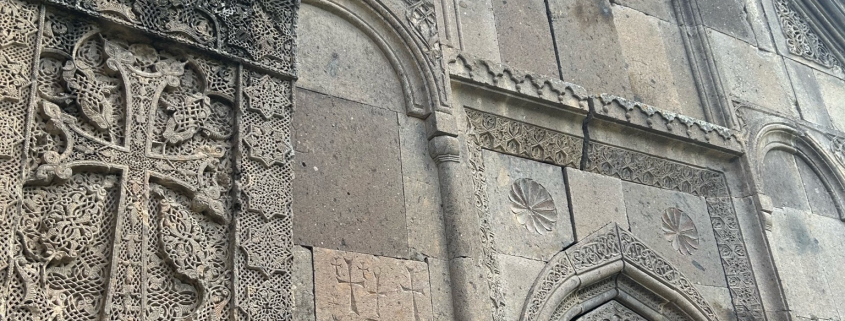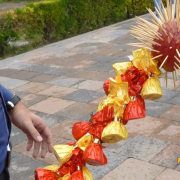Gosh – Science and Religion together
Roots of Armodoxy: Gōsh-Science & Religion
Gender equality, tolerance, scientific models of the universe, are all topics of discussion in our world today. It might surprise you, that the Armenian Church priest and scholar, Mkhitar Gōsh, was discussing these topics and had formulated expressions that even today, many contemporary thinkers are hesitant to .
Mkhitar Gōsh’s (1130-1213) descriptors are many. He was a scholar, a writer, public figure, thinker and a priest. He was a representative of the Armenian renaissance. At Gōshavank, a large statue of this giant of Armenian history greets you as walk up the hill to enter this sanctuary, and the adjoining buildings. This was a center of learning and housed its own library.
Fr. Tateos is the dynamic head of this monastery, and he doesn’t hide his enthusiasm, neither for Mkhitar Gōsh nor for Gōshavank. As a seat of education, he points out how many of the artifacts spoke to the brilliance of the people and the times. For instance, a large Cross-stone, Khatchkar, stands tall to tell a story of heaven-earth relations. It may not seem very unusual to see earth depicted as a large sphere, until learn that this stone was carved in the 6th century, some 600 years before the Inquisition in Europe, Armenians had already understood the earth to be round and rejected the flat-earth concept. Gōsh had written about equality of the sexes. He had advocated for health care and autopsies, to give reasons for death so that medicine could advance. Gōsh was certainly ahead of his time, by nearly a millennium.
Even more, this monastery featured large spaces for learning, with rooms and spaces dedicated to the preservation of books. The double walled, climate-controlled rooms of the 12 century structure preserved manuscripts and books of knowledge, but of course, those room were no match for the ignorance of the enemy who found ways of burning and destroying these treasures of thought.
Even the architecture of Gōshavank was ahead of its time, with Lego-like notches, the stones are set into place to remain in place in this earthquake-prone region.
Mkhitar Gōsh and the work done at Gōshavank are expressions of progressiveness without the cost of spiritual degradation. Often science and religion are thought to be mutually exclusive. In fact, just the opposite is true. Mkhitar Gōsh is only one example of those who dared to understand the spirit and soul as sixth and seventh senses that needed to be developed. The troubadour, Sayat Nova, is another example of one who became a priest to explore the inner depths of the heart.
A great man of wisdom once said, “The only limits that we have in the world are the ones we put on ourselves.” It is so true. When we discount the role of spirit in our lives, we have placed the greatest limit on ourselves because we have negated half of our humanity. In Einstein’s words, “Science without religion is lame; religion without science is blind.”
We pray today, “Lord our God, you have created all things with Wisdom, accept us as your creatures in your world. May we marvel at the things we do see and celebrate the mysteries of the unseen. In all things, may we express ourselves with joy and love. Amen”

 2023 Fr. Vazken
2023 Fr. Vazken








 2023 Fr. Vazken
2023 Fr. Vazken
Leave a Reply
Want to join the discussion?Feel free to contribute!